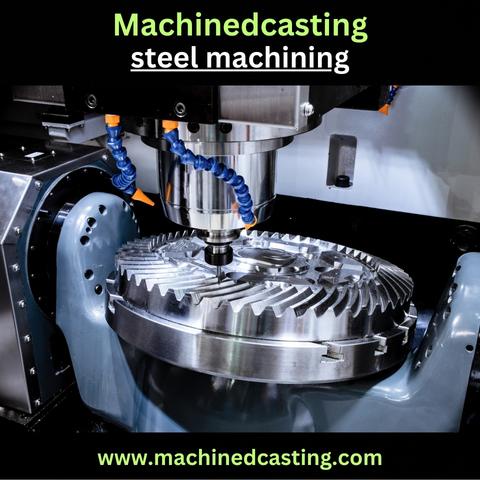Steel machining is a critical process in manufacturing, encompassing various techniques to shape, cut, and finish steel components. Achieving precision and efficiency in steel machining requires expertise, appropriate tools, and a systematic approach. This guide aims to outline the key steps and considerations to optimize steel machining processes.
-
Material Selection: Choosing the right type of steel is fundamental to successful machining. Variations in carbon content, alloying elements, and heat treatment greatly affect machinability. Low carbon steels are generally easier to machine due to their softer composition, while high carbon and alloy steels offer superior strength but can pose challenges during machining. Consult material datasheets and consider the specific properties required for the final product.
-
Tool Selection and Preparation: Selecting the appropriate cutting tools is crucial for efficient steel machining. High-speed steel (HSS), carbide, and cobalt-based tools are commonly used for steel due to their hardness and wear resistance. Ensure tools are sharp and properly calibrated. Proper tool preparation includes precise grinding, edge honing, and coatings to withstand high temperatures and abrasion.
-
Machining Techniques: a. Cutting Speeds and Feeds: Optimize cutting parameters based on the steel type, tool material, and machining operation. Adjust cutting speeds and feeds to prevent overheating and tool wear while maintaining efficient material removal. b. Tool Path Strategies: Implement efficient tool paths to minimize tool engagement and maximize chip removal. Strategies like climb milling or conventional milling can impact tool life and surface finish. c. Cooling and Lubrication: Use appropriate coolants or lubricants to dissipate heat, reduce friction, and prolong tool life. Flood cooling or mist systems help maintain stable machining conditions.
-
Machining Setup and Monitoring: a. Rigorous Setup: Secure workpieces and tools properly to prevent vibration and ensure accuracy. Use precision measuring instruments to verify dimensions and alignments. b. Monitoring and Quality Control: Regularly inspect machined parts for dimensional accuracy, surface finish, and defects. Implement in-process checks and adjust machining parameters as needed to maintain quality standards.
-
Safety Measures: Prioritize safety by following machine manufacturer guidelines, wearing appropriate personal protective equipment (PPE), and providing adequate training to operators. Avoiding contact with moving parts, using machine guards, and handling sharp tools cautiously are essential safety practices.
Conclusion: Mastering steel machining involves a blend of technical knowledge, precise execution, and continuous improvement. By carefully considering material properties, selecting the right tools, optimizing machining parameters, and prioritizing safety, manufacturers can achieve superior results in steel machining, ensuring both efficiency and quality in their production processes.


No comments yet